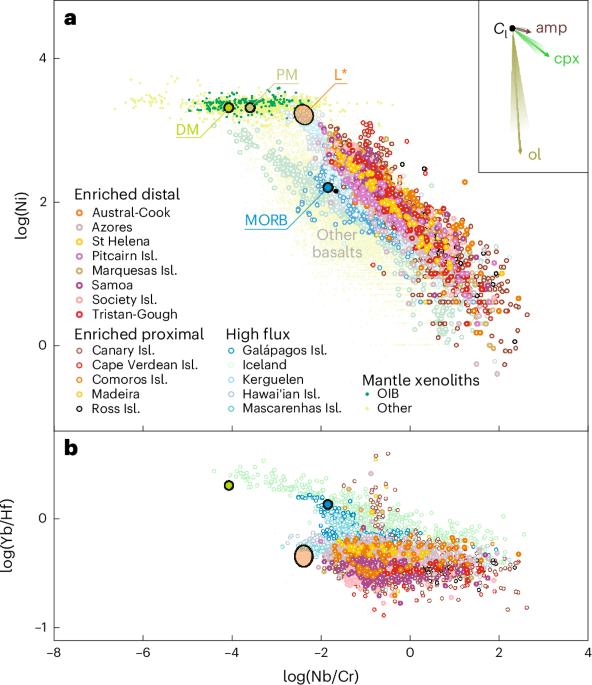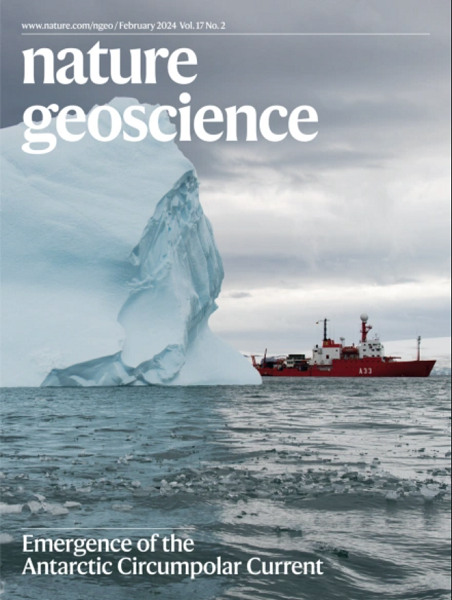A common precursor for global hotspot lavas
IF 15.7
1区 地球科学
Q1 GEOSCIENCES, MULTIDISCIPLINARY
引用次数: 0
Abstract
Hotspot lavas exhibit chemical heterogeneity, much of which is ascribed to heterogeneous deep mantle sources that contain various components with distinct composition, origin and age. However, characterizing primary melt compositions and mantle heterogeneity directly is challenging. Here we investigate a global dataset of hotspot lavas to constrain the incompatible-element composition of their parental melts and sources. Trace-element ratios indicate that the compositional heterogeneity of global hotspot lavas is not primary, but reflects processes that hotspot melts undergo as they ascend to the surface. We find the parental melts of these lavas, as well as of kimberlites and basalts from large igneous provinces, to be uniform in their elemental, and radiogenic and noble-gas isotope, composition. We suggest that the parental melts to all of these lavas derive from a depleted and outgassed mantle reservoir that was replenished with incompatible element-enriched material during the Archaean. This interpretation explains the elemental, radiogenic and noble-gas isotope compositions of hotspot lavas without requiring a heterogeneous lower mantle or the long-term survival of undegassed relics from a primordial Earth. An investigation of global trace-element data suggests that the parental melts of hotspot lavas are uniform in their elemental composition, consistent with derivation from a common depleted and outgassed mantle reservoir.


全球热点熔岩的共同前体
热点熔岩表现出化学异质性,其中大部分归因于异质深地幔源,这些地幔源包含具有不同成分、来源和年龄的各种成分。然而,直接描述原生熔体成分和地幔异质性具有挑战性。在这里,我们调查了全球热点熔岩数据集,以确定其母体熔体和来源的不相容元素组成。痕量元素比率表明,全球热点熔岩的成分异质性并不是原生的,而是反映了热点熔体在上升到地表时所经历的过程。我们发现,这些熔岩以及来自大型火成岩带的金伯利岩和玄武岩的母熔体的元素、放射性和惰性气体同位素组成是一致的。我们认为,所有这些熔岩的母熔体都来自一个枯竭和排气的地幔储层,该储层在太古宙期间得到了富含不相容元素物质的补充。这种解释可以解释热点熔岩的元素、放射源和惰性气体同位素组成,而不需要一个异质的下地幔或来自原始地球的未脱气遗迹的长期生存。
本文章由计算机程序翻译,如有差异,请以英文原文为准。
求助全文
约1分钟内获得全文
求助全文
来源期刊

Nature Geoscience
地学-地球科学综合
CiteScore
26.70
自引率
1.60%
发文量
187
审稿时长
3.3 months
期刊介绍:
Nature Geoscience is a monthly interdisciplinary journal that gathers top-tier research spanning Earth Sciences and related fields.
The journal covers all geoscience disciplines, including fieldwork, modeling, and theoretical studies.
Topics include atmospheric science, biogeochemistry, climate science, geobiology, geochemistry, geoinformatics, remote sensing, geology, geomagnetism, paleomagnetism, geomorphology, geophysics, glaciology, hydrology, limnology, mineralogy, oceanography, paleontology, paleoclimatology, paleoceanography, petrology, planetary science, seismology, space physics, tectonics, and volcanology.
Nature Geoscience upholds its commitment to publishing significant, high-quality Earth Sciences research through fair, rapid, and rigorous peer review, overseen by a team of full-time professional editors.
 求助内容:
求助内容: 应助结果提醒方式:
应助结果提醒方式:


